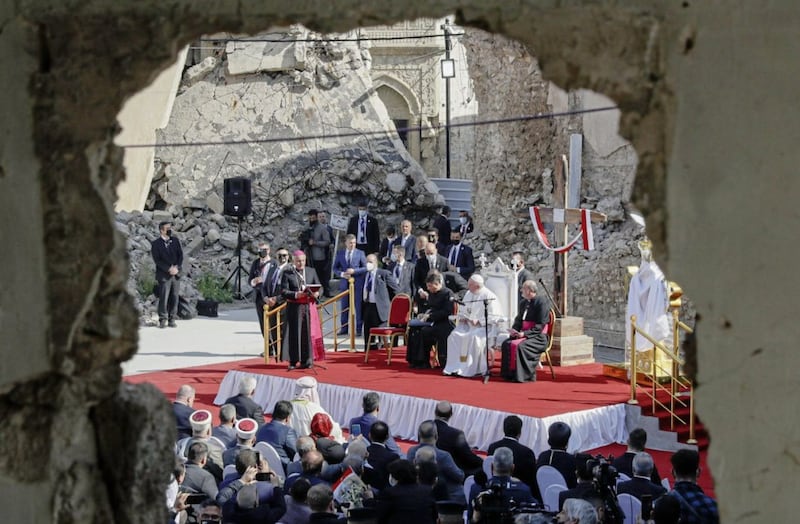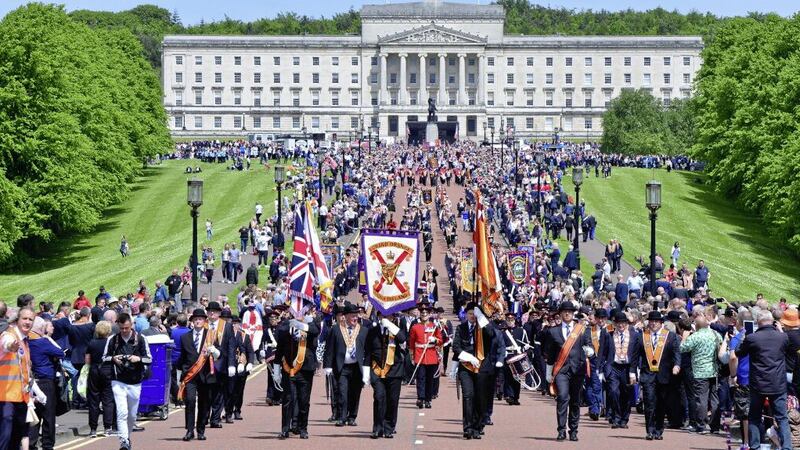THE bloody waves of apocalyptic violence and deadly storms of destruction that Islamic State summoned upon Syria and Iraq crashed into the ancient city of Mosul in June 2014.
Mosul, in northern Iraq, was an important symbolic target for the terror group.
It was there, in the Great Mosque of al-Nuri, that its leader, Abu Bakr al-Baghdadi, declared the formation of a caliphate stretching from Aleppo in Syria to Diyala in Iraq.
In the end, IS controlled Mosul for three years, its black flag hanging like a death shroud from the mosque's 45 metre tall minaret throughout.
Islamic State's particular genocidal brand of fundamentalism meant that Muslim 'apostates' were its most numerous victims, and arbitrarily rounded up for mass execution.
But the Christian communities scattered across the Nineveh Plains, to the north and east of the city, also faced intense persecution, enslavement and death in the most grotesque and medieval of ways.
Other minorities, most painfully the Yazidis, were also executed as IS pursued its fantasy of preparing for the religious-military battle that would end the world.
The avowed enemy in this final judgment was "Rome". Abu Muhammad al-Adnani, the IS spokesman, often spoke about this: "We will conquer your Rome, break your crosses, and enslave your women..."
Adnani was killed in an airstrike in 2016 so he didn't live to see the prophecy reversed: for on Sunday it was 'Rome' who entered Mosul; not in a battle but in the smiling, white-clad, 84-year-old figure of Pope Francis, the Bishop of Rome. Peace, as he said, is more powerful than war.
All papal visits are significant, but some are more consequential than others.
Pope Francis's four-day trip to Iraq may prove to be the most important overseas visit of his papacy.
He shrugged aside concerns over Covid-19 and a security situation in Iraq that remains highly volatile to conduct a visit that embodied two of the chief concerns of his papacy: the plight of marginalised Christians, and building relations with other religions.
When Islamic State desecrated St Addai church near Mosul, they decapitated a statue of the Virgin Mary and sliced off its hands. Today, it has been restored and stands as a testimony that even the most dreadful circumstances can be restored
Francis travelled to the holy city of Najaf to meet Grand Ayatollah Ali al-Sistani, Iraq's most senior Shiite cleric.
Afterwards, they delivered a joint message urging Muslims to embrace and protect the beleaguered Christian minority.
That call needs to be heard nowhere more urgently than in northern Iraq - the "cradle of civilisation," as the Pope noted. There the land is woven into the very fabric of the Bible and the story of God's people.
Every stop on this stage of the Pope's journey seemed to be played out against the backdrop of shelled buildings, rubble and graves.
One of the most striking images was captured in Mosul, where Francis spoke in a square which is home to four different churches - Syriac Catholic, Armenian-Orthodox, Syriac Orthodox and Chaldean - which now stand only as pulverised ruins.
While there were moments of sorrow, there was also hope and solidarity: "We have not been forgotten," was a refrain from the Christians, tearful yet jubilant, who crowded the roads.
Churches are being rebuilt and Christians are being encouraged to return to the region.
An eloquent witness to the resilience of the Christian community could be found in the form of a cherished statue of the Virgin Mary.
It stood by the altar when Pope Francis celebrated an open air Mass in a sport stadium in Erbil.
When IS desecrated St Addai church in Keramlis, an ancient Assyrian town around 20 miles from Mosul, they decapitated the statue and sliced off its hands.
Today, the statue has been restored and stands as a testimony that even the most dreadful circumstances can be restored and redeemed for good.
It's an example of, as Pope Francis put it, "our conviction that fraternity is more durable than fratricide, that hope is more powerful than hatred...".
That seems to be a message that should be heard not only in Iraq but also closer to home.











